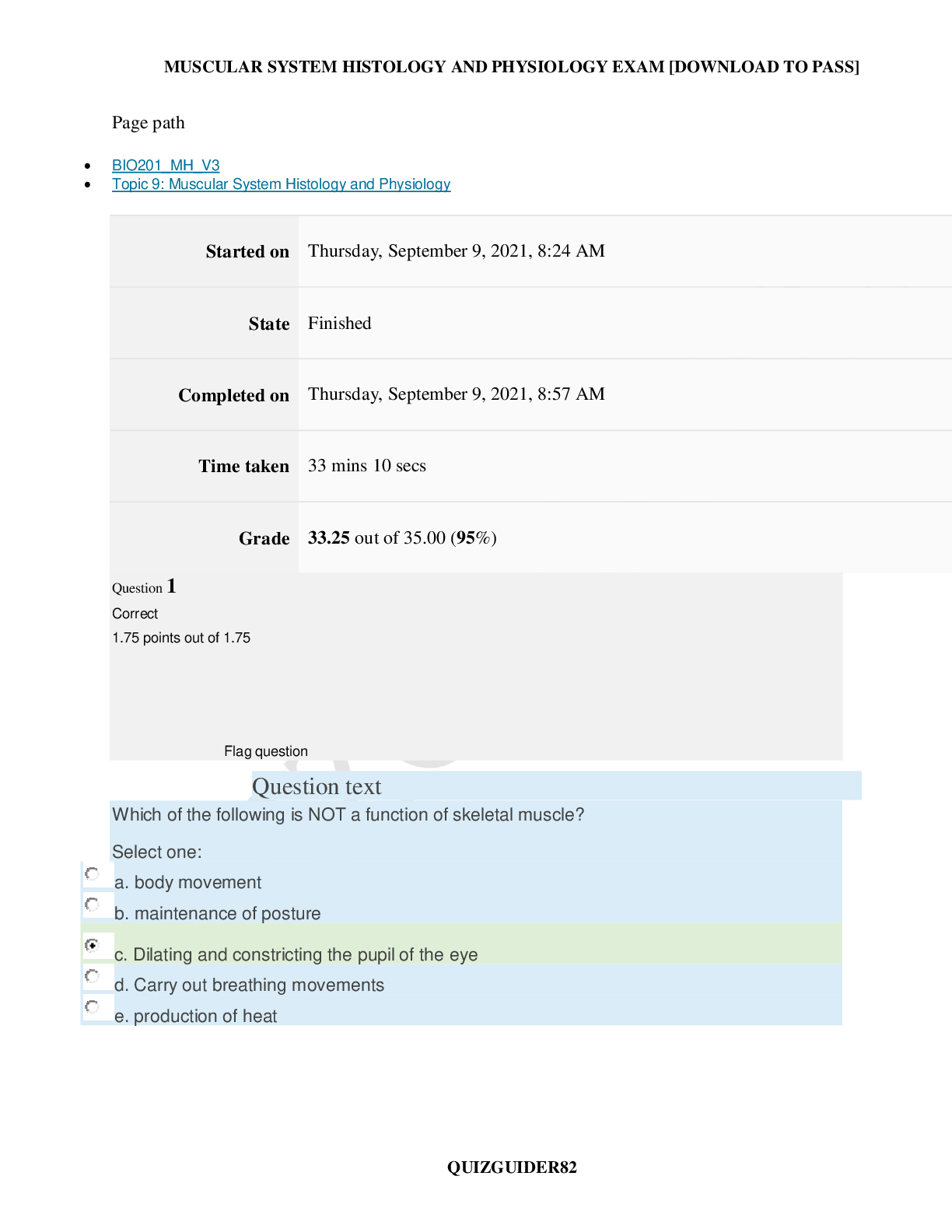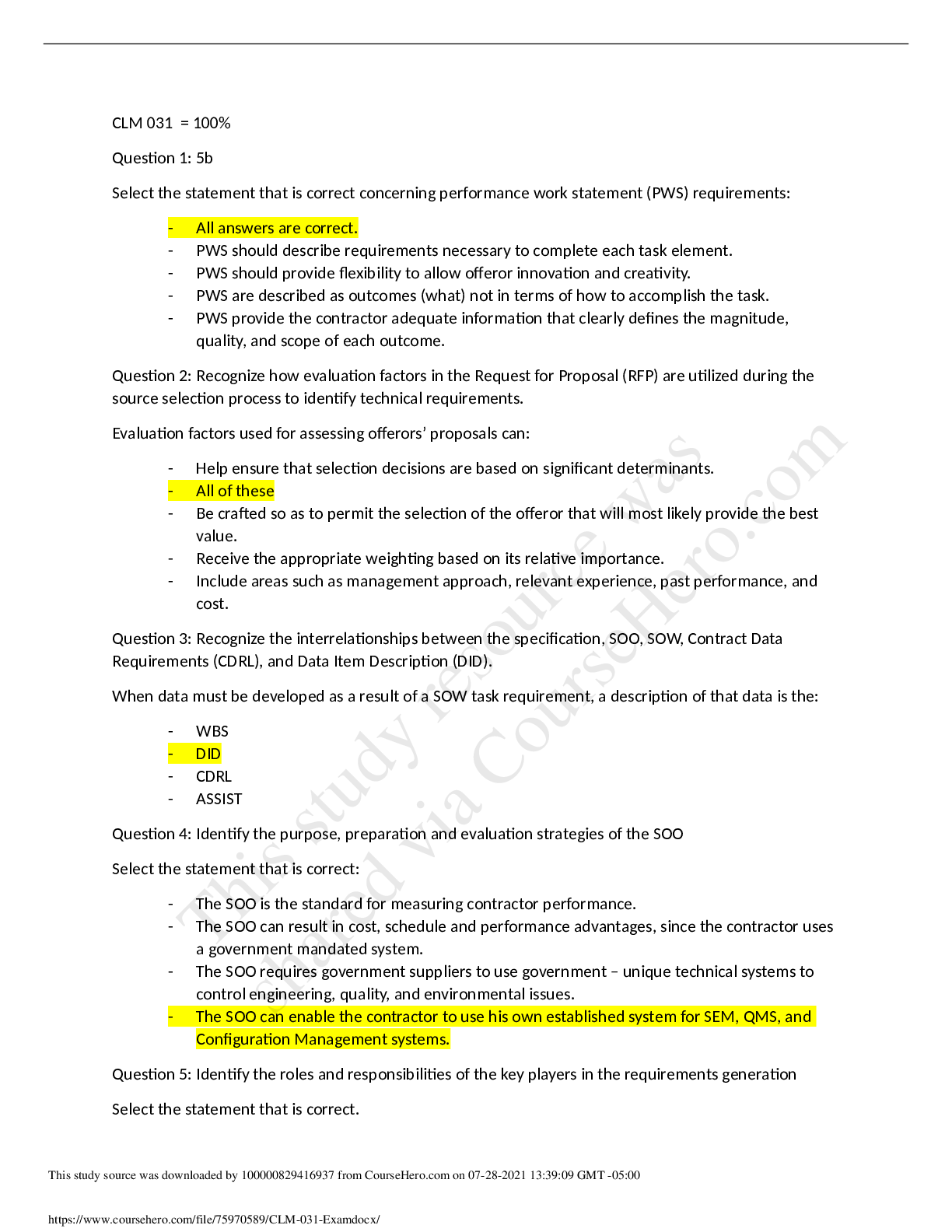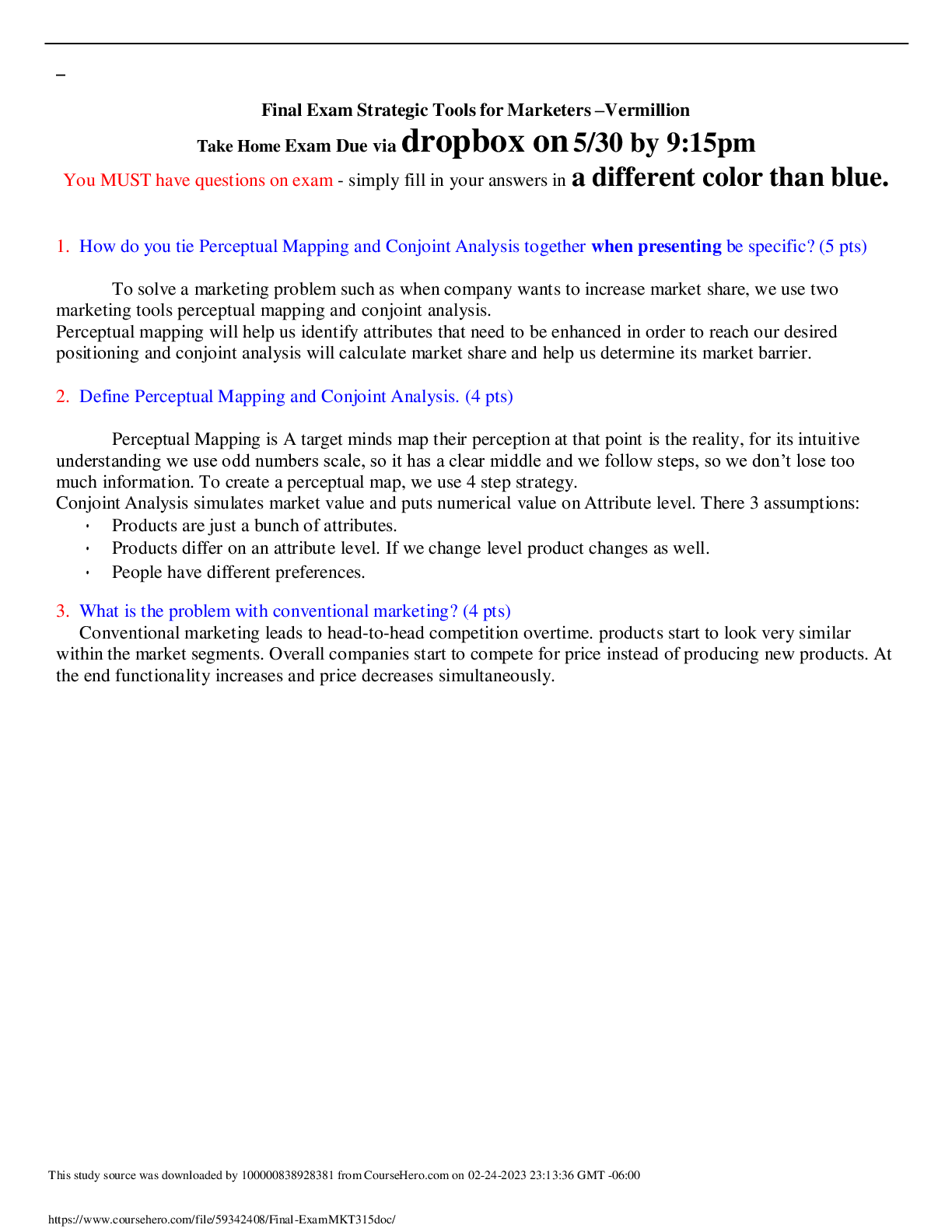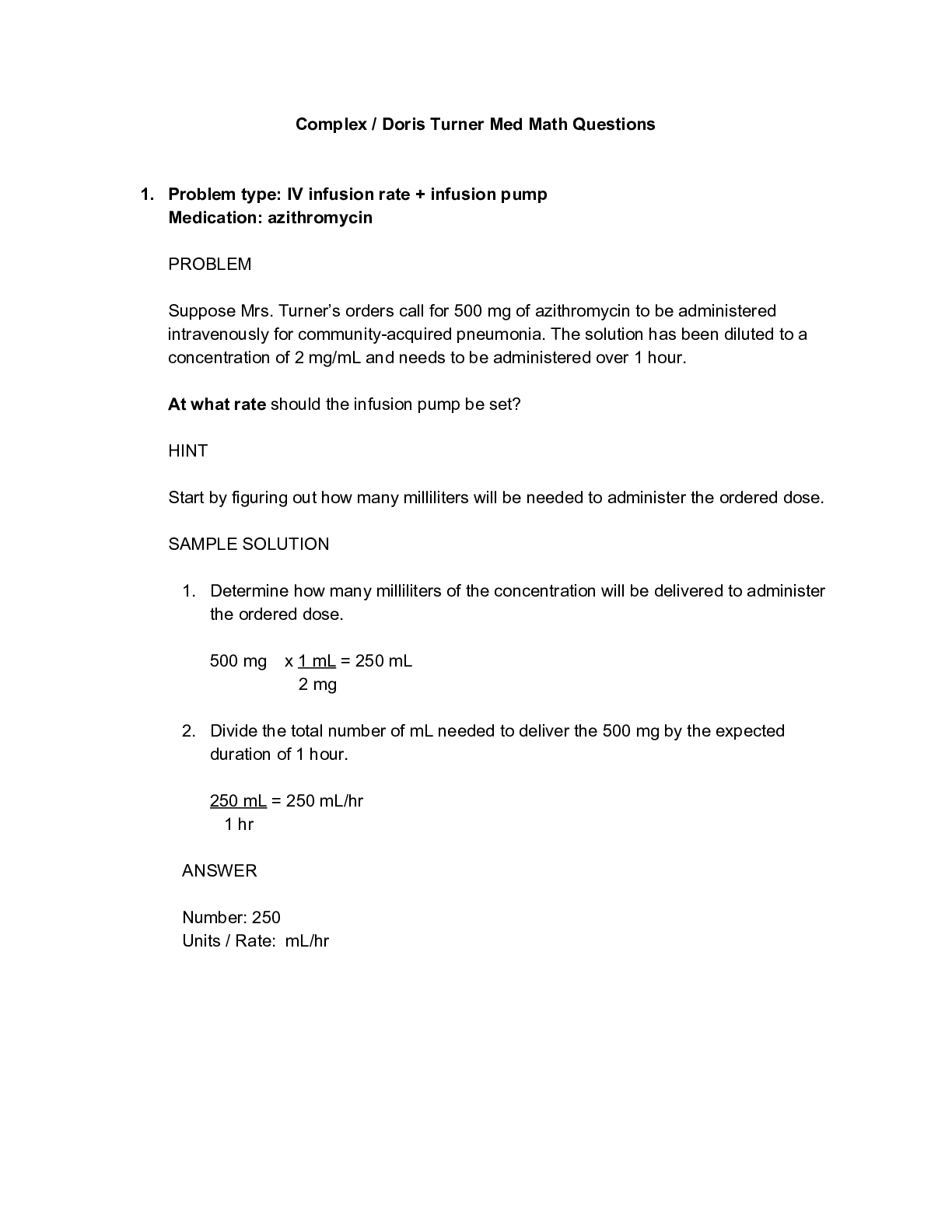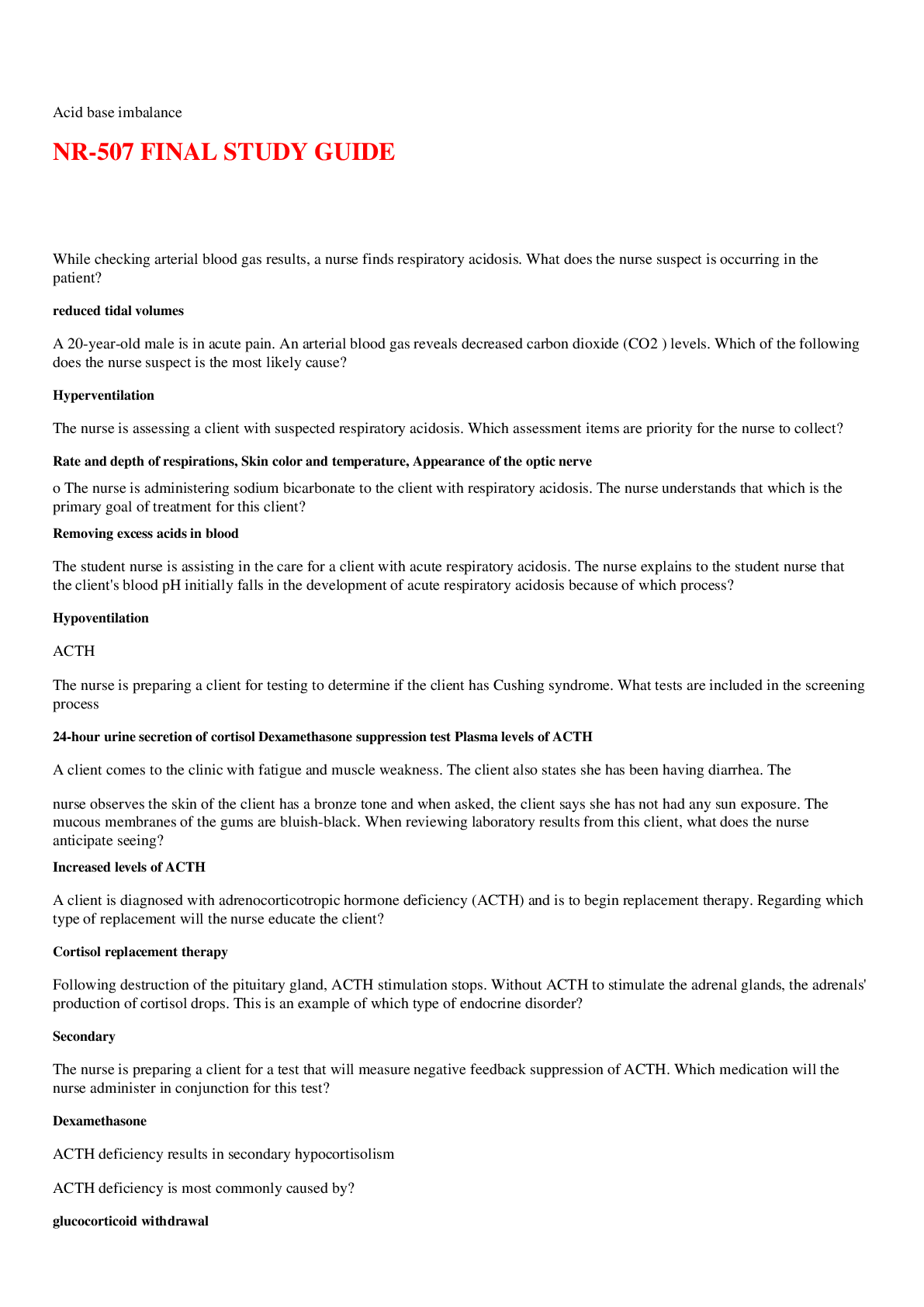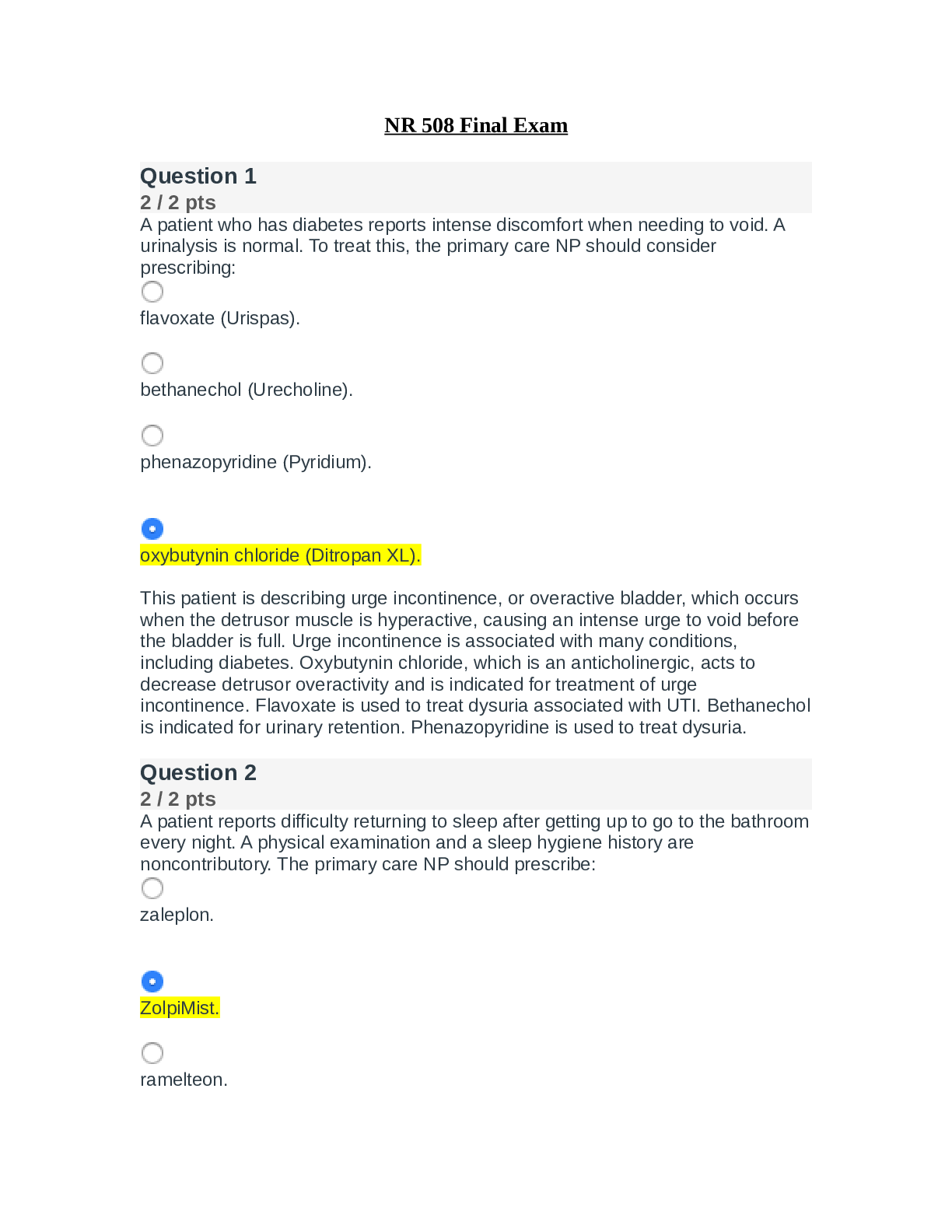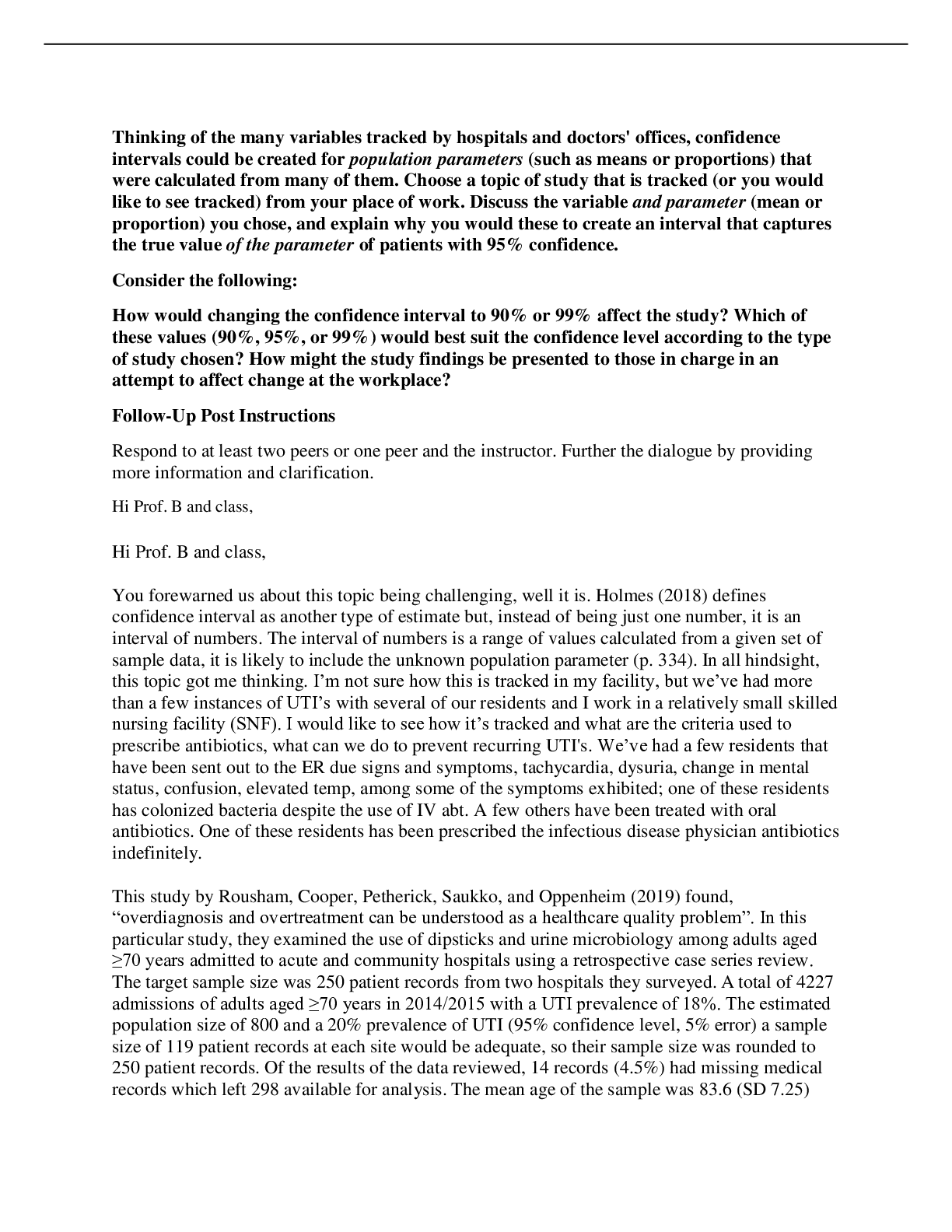Anatomy and Physiology - A&P 1 > QUESTIONS & ANSWERS > BIO201_MH_V3: The Special Senses (PERFECT REVISION TOOL) REFER A FRIEND TO TELL A FRIEND (All)
BIO201_MH_V3: The Special Senses (PERFECT REVISION TOOL) REFER A FRIEND TO TELL A FRIEND
Document Content and Description Below
BIO201_MH_V3 Topic 14: The Special Senses Started on Friday, September 10, 2021, 9:02 AM State Finished Completed on Friday, September 10, 2021, 9:27 AM Time taken 24 mins 46 secs Grade 35.0... 0 out of 35.00 (100%) Question 1 Correct 1.75 points out of 1.75 Flag question Question text Identify the type of hair cells of the spiral organ that are responsible for hearing. Select one: a. inner hair cells b. outer hair cells c. inner and outer hair cells Question 2 Correct 1.75 points out of 1.75 Flag question Question text Which auditory ossicle is attached to the tympanic membrane? Select one: a. labyrinth b. incas c. malleus d. stapes e. oval window Question 3 Correct 1.75 points out of 1.75 Flag question Question text The most sensitive taste buds are found in _____ papillae. Select one: a. formate b. filiform c. fungiform d. vallate e. foliate Question 4 Correct 1.75 points out of 1.75 Flag question Question text What ion(s) cause(s) depolarization in olfactory neurons? Select one: a. Na+ b. Ca2+ c. K+ d. Both Na+ and K+ e. Both Na+ and Ca2+ Question 5 Correct 1.75 points out of 1.75 Flag question Question text More sound volume is perceived when Select one: a. sound wave amplitude increases. b. action potentials from hair cells are blocked. c. sound wave amplitude decreases. d. sound wave frequency decreases. e. sound wave frequency increases. Question 6 Correct 1.75 points out of 1.75 Flag question Question text Arrange the following to reflect the correct sequence an action potential would follow to reach the olfactory cortex of the brain: (1) olfactory bulb (2) olfactory cortex (3) olfactory epithelium (4) olfactory tract Select one: a. 1, 2, 3, 4 b. 3, 4, 1, 2 c. 1, 4, 2, 3 d. 3, 1, 4, 2 e. 4, 3, 2, 1 Question 7 Correct 1.75 points out of 1.75 Flag question Question text Humans are able to distinguish several million shades of color because Select one: a. humans have large retinas. b. humans have binocular vision. c. they have many different types of cone cells. d. different proportions of cone cells respond to each wavelength of light. e. humans have more cones than rods. Question 8 Correct 1.75 points out of 1.75 Flag question Question text What is the function of the inner hair cells? Select one: a. The inner hair cells are responsible for hearing. b. The inner hair cells regulate the tension of the basilar membrane. c. The inner hair cells protect the external auditory canal. d. The inner hair cells detect chemicals in saliva; they are responsible for our ability to taste. Question 9 Correct 1.75 points out of 1.75 Flag question Question text Which of the following cranial nerves would cause a person discomfort when getting dental work done? Select one: a. optic b. facial c. abducens d. trigeminal e. vagus Question 10 Correct 1.75 points out of 1.75 Flag question Question text Which of the following functions is carried out by both aqueous and vitreous humor? Select one: a. cleanses the eye b. nourishment of the eye c. refraction of light rays d. generation of a visual image e. control the amount of light entering the eye Question 11 Correct 1.75 points out of 1.75 Flag question Question text Which of the following is part of the spiral organ (organ of Corti)? Select one: a. modiolus b. vestibule c. tectorial membrane d. scala tympani e. chorda tympani Question 12 Correct 1.75 points out of 1.75 Flag question Question text The sensation of hearing occurs when sensory impulses from the ears are transmitted to the auditory cortex in the __________lobe from the _________nerve. Select one: a. occipital; trochlear b. occipital; vestibulocochlear c. temporal; trochlear d. temporal; vestibulocochlear e. parietal; abducens Question 13 Correct 1.75 points out of 1.75 Flag question Question text The transparent anterior portion of the sclera is the Select one: a. iris. b. retina. c. cornea. d. choroid. e. pupil. Question 14 Correct 1.75 points out of 1.75 Flag question Question text The main factor affecting depth of focus is the Select one: a. convergence. b. accommodation. c. shape of the lens. d. size of the lens. e. size of the pupil. Question 15 Correct 1.75 points out of 1.75 Flag question Question text The sense of taste is called Select one: a. olfaction. b. perception. c. gustation. d. tastant. e. mastication. Question 16 Correct 1.75 points out of 1.75 Flag question Question text Why does inhaling deeply and slowly through the nose help to identify an odor? Select one: a. More air containing the odor is brought into contact with the olfactory epithelium. b. Impulses originate slowly in the olfactory epithelium. c. The tissue needs more time in contact with the odor. d. Threshold for odor detection is high. e. Receptors in the olfactory epithelium are highly specific. Question 17 Correct 1.75 points out of 1.75 Flag question Question text A branch of the ___________ nerve transmits taste sensations from anterior two-thirds of the tongue, except vallate papillae. Select one: a. Medulla oblongata b. Facial nerve c. Glossopharyngeal nerve d. Chorda tympani Question 18 Correct 1.75 points out of 1.75 Flag question Question text Damage to the vestibular branch of the vestibulocochlear nerve would result in loss of Select one: a. taste. b. sight. c. hearing. d. balance. e. smell. Question 19 Correct 1.75 points out of 1.75 Flag question Question text Neurons synapsing on the hair cells of the maculae and the crista ampullaris have cell bodies in the Select one: a. superior colliculus. b. vestibular ganglion. c. superior olivary nucleus. d. medial geniculate nucleus. e. cochlear ganglion. Question 20 Correct 1.75 points out of 1.75 Flag question Question text Light and dark adaptation involves Select one: a. pupillary reflexes. b. variations in rod and cone function. c. changes in the amount of available rhodopsin. d. pupillary reflexes and changes in the amount of available rhodopsin. e. pupillary reflexes, variations in rod and cone function and changes in the amount of available rhodopsin. [Show More]
Last updated: 1 year ago
Preview 1 out of 10 pages
Instant download

Buy this document to get the full access instantly
Instant Download Access after purchase
Add to cartInstant download
Reviews( 0 )
Document information
Connected school, study & course
About the document
Uploaded On
Dec 03, 2022
Number of pages
10
Written in
Additional information
This document has been written for:
Uploaded
Dec 03, 2022
Downloads
0
Views
102
